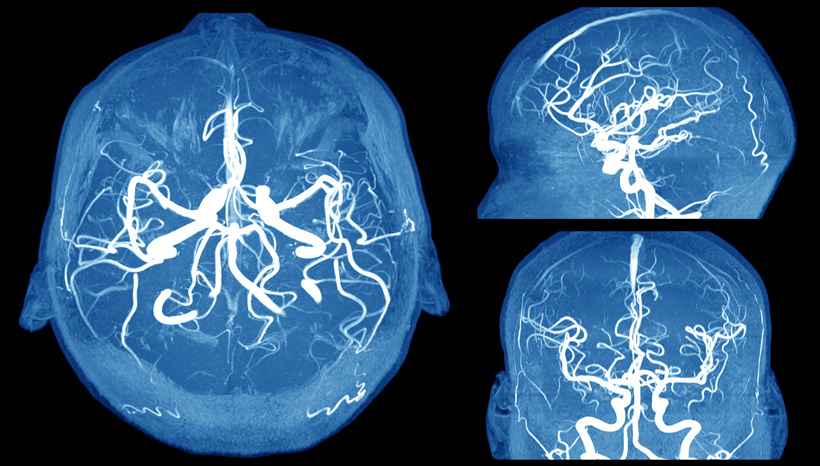How To Spot A Brain Aneurysm Before It’s Too Late
February 10 2018
Lisa Colagrossi, a mother of two and a respected network news journalist, was experiencing the worst headache of her life.
“She said it felt like her head was going to explode,” recalls her husband, Todd Crawford. Along with her awful headache, Colagrossi had a stiff neck, a tingling sensation in her face, and sensitivity to light. “The headache would last a couple of hours, and then it would subside for a day or two,” Crawford says. “We talked about her getting it checked out, but she didn’t feel like she had time, so we dismissed it.”
That decision, tragically, would prove fatal when in March 2015—three weeks after her headaches first began—Colagrossi suffered a ruptured aneurysm.
“One thing that has haunted me more than anything else is, how could we not have known?” Crawford says. “The more I looked into aneurysms, the more I found that there’s no one out there talking about them, and there’s very little public education about the warning signs.” To help fill that gap in public awareness and education, Crawford started The Lisa Colagrossi Foundation (TLCF).
Aneurysm basics
So just what is a brain aneurysm? It’s a weakness in the wall of one of your brain’s blood vessels, explains neurosurgeon Dr Howard Riina.
As blood courses through your brain, that weakness allows the wall of the vessel to push outward, forming a bulge. Like an over-inflated balloon, that bulge can rupture, which allows blood to leak out into the surrounding brain tissue, Riina says.
“Until a rupture or leak occurs, many people are walking around with an aneurysm and don’t know it,” he explains. How many? “Some data we have suggest 6% to 9% of the population have one.”
But many aneurysms don’t rupture, and so a lot of us never realise we have one, Riina says. Even if an MRI or other imaging scan stumbles onto an aneurysm, “We don’t even recommend treatment unless it’s is above a certain size, or a person has a family history of ruptured aneurysms,” he says.
What happens during a rupture
It’s not like blood is just squirting out, Riina says. “That might happen for a few seconds, but usually a little platelet plug forms almost immediately.”
Some patients, like Colagrossi, may suffer very small leaks in the days or weeks leading up to a major rupture. But even small amounts of blood are “very irritating” to your brain, Riina says. The leaked blood increases the pressure inside your cranium. Also, leaks or ruptures divert blood from brain regions and tissues that require a steady supply.
Both the pressure and the lack of sufficient blood caused by a ruptured aneurysm can lead quickly to unconsciousness and death. Riina says 30% to 50% of sufferers will die as soon as an aneurysm ruptures.
Rupture signs and symptoms
The most common symptom is the worst headache of your life, or what Crawford calls the “W-H-O-L.”
“People describe it as like being struck by a bolt of lightning,” Riina says. That headache could be accompanied by the neck stiffness, face tingling, and light sensitivity Colagrossi experienced. Some people also report hearing a gunshot or boom when their rupture occurs.
Seizures, a feeling of weakness in the limbs, blurry or double vision, and extreme tiredness are all associated symptoms.
But a sudden, excruciating headache is really the hallmark of a rupture, Riina says. (The other symptoms he mentions accompany or come after that headache.) “The headache could be anywhere or all over, but patients usually describe it as being focused behind the eyes,” he adds.
What should you do?
If you or someone you know is suffering from the kind of symptoms Riina describes, “Call 911 or go to an emergency department immediately,” he says.
There are several different procedures doctors can perform to relieve the pressure caused by your ruptured aneurysm, but “you’re not out of the woods yet,” Riina says.
Your brain is a sensitive organ. Even if a person initially survives and receives treatment, about a third of patients die, and another third have some kind of lasting impairment. But the last third “return to their normal level of functioning,” Riina says.
Crawford says the foundation he started in his wife’s memory is committed to improving those numbers. “If someone had been doing the work we’re doing now to raise public awareness, Lisa and millions of others would still be alive,” he says.
Sourced from Prevention.
